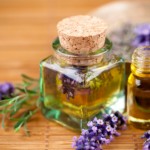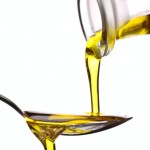
Does a headache pester you in the morning after a night when you had a little more to drink than usual?
Do you complain of a headache after sitting long hours in front of the television?
Well, you’re not alone.
Factors causing headaches
Headaches are a common occurrence and they are of several types. Headaches can be caused by a single factor or a combination of two or more factors. The most common factors are:
- Anxiety and stress
- Constriction of blood vessels
- High blood pressure
- Migraine
- Excessive smoking
- Excessive alcohol consumption
- Dehydration
- High altitudes
- Exposure to extreme cold or extreme sunlight.
Thanks to our modern lifestyle, recurring headaches are becoming more and more common. Not surprisingly, the marketplace is filled with various types of headache treatment ranging from instant headache relief to migraine headache relief and even sinus headache relief.
Well, if you are not a pop-a-pill advocate, you can rely on natural cure for headaches. Here are some home remedies for headache that have been used over centuries to provide natural headache relief.
10 Effective tips for headache relief
 1. Lavender oil: Not only does lavender look ornamental and smell great, it’s also a useful home remedy for headaches and migraine pain. You can either inhale the aroma of the lavender oil, or use it for topical application.
1. Lavender oil: Not only does lavender look ornamental and smell great, it’s also a useful home remedy for headaches and migraine pain. You can either inhale the aroma of the lavender oil, or use it for topical application.
If you prefer inhaling, add three to four drops of the oil into three cups of boiling water. Throw a towel over your head and the vessel (to prevent the vapors from escaping) and inhale the goodness of lavender. Remember, though you can take in the vapor of lavender oil, you must not take lavender oil orally.
To apply the oil topically, take a few drops on your fingers, apply it to the affected area and gently rub it in. The good thing about lavender oil is that, unlike most medicinal oils, you need not dilute it.
2. Peppermint: Peppermint oil can provide soothing relief for headaches. Headaches are often caused by poor blood flow to the head.
As the fresh-smelling peppermint oil has vasodilating and vasoconstricting properties, it helps to pump blood by opening and closing the arteries.
Peppermint oil also helps open up the sinuses.
This plays a crucial role in helping relieve headaches as more oxygen gets into the blood.
As with lavender oil, peppermint oil can be inhaled or applied locally.
 3. Basil oil: This strong-smelling and unique-tasting herb has gained popularity as a topping for pizzas and pastas.
3. Basil oil: This strong-smelling and unique-tasting herb has gained popularity as a topping for pizzas and pastas.
But what many people don’t know is that the oil derived from the basil plant can also be a natural home remedy for relieving headaches.
Basil oil works as a muscle relaxant so it is very helpful in providing relief for headaches caused by tension and tight muscles.
4. Flaxseed oil: Flaxseeds are rich in fiber and omega-3 fats. Both these properties help relieve different types of headaches.
The omega-3 content in flaxseed helps relieve headaches that results from inflammation. The fiber helps in relieving headaches that are linked to constipation.
Flaxseed can be used in the oil form as well as whole seeds.
Flaxseed is easy to add to a smoothie, your oatmeal, or even mix into a glass of water in the morning or at night.
5. Buckwheat: This triangle-shaped seed is gaining popularity as a home remedy for headaches and migraine pain. Despite the name, buckwheat is not related to wheat, and is not technically a grain. Buckwheat has numerous health benefits and is a gluten-free food.
Like flaxseed buckwheat are anti-inflammatory in nature and help relieve the pain of headache and migraine.
Buckwheat is rich in phyto-chemicals such as flavonoids which contain antioxidant properties.
More recently, buckwheat hull pillows are used to provide great support for the back, neck, and also the head.
Unlike down or feathers, pillows made from buckwheat don’t retain body heat.
Some expensive hotels use buckwheat hull pillows because they are natural, and hypoallergenic to increase circulation. Many health care professionals have also started recommending buckwheat pillows to patients suffering from migraines.
6. Feverfew: This perennial plant belonging to the daisy family grows naturally in Europe, North America and Canada. It has been used in herbal remedies for centuries. Feverfew is used as a preventative treatment for migraine.
A number of people have reported that after taking feverfew, their migraines have gradually become less frequent and in a few cases have stopped altogether.
Many scientific studies attest the efficacy of feverfew as a viable preventative treatment for migraine.
You can buy feverfew tablets from health stores or you can grow feverfew plants and use its leaves to treat migraine. You simply pick the leaves and then eat them.
You can eat the leaves plain or chop them up and put in salad or a sandwich.
They taste rather bitter and so you may find a bit of sugar or honey will help. Eat about three to four leaves each day. If fresh leaves are hard to come by, you can use dried leaves as well.
Instant headache remedies from the kitchen
 While all the above herbs provide the relief you want, they may not be available the instant the headache strikes. Which is why you might want to try these remedies:
While all the above herbs provide the relief you want, they may not be available the instant the headache strikes. Which is why you might want to try these remedies:
7. Mix 1/8 cup of lime juice and 1/8 cup of freshly extracted ginger juice in a cup and drink.
8. Take a handful of coriander leaves. Crush the leaves and extract the juice form the leaves. Apply this extract to the forehead and temples. You could do the same with mint leaves, too.
9. Add 1 tsp of dry ginger powder to one tablespoon of water. Mix to form an even paste. Apply this paste to the temples and forehead for quick relief. I must caution you, though, initially you might experience a mild burning sensation.
10. And if these are not available, try a simple scalp massage with any oil. The gentle pressure of your hands on the affected areas can increase the circulation to the part and drive off the headache.
And one more thing: Certain foods have been shown to affect the frequency and severity of headaches. These foods include dairy, chocolate and peanut butter. Even fruits like banana, avocado, and some citrus foods can cause headaches.
Then you have meats with nitrate, like what you’d find in bacon and hot dogs. Some people’s headaches can be triggered with fermented or pickled foods, and monosodium glutamate (MSG)-rich food can also cause headaches.
With so many headache catalysts in our diet, it makes sense to be aware of what we eat, and make the required changes in our diet to prevent the headaches from happening in the first place. This way, we don’t need to over-think the problem – and break our heads trying to find relief.





No comments:
Post a Comment